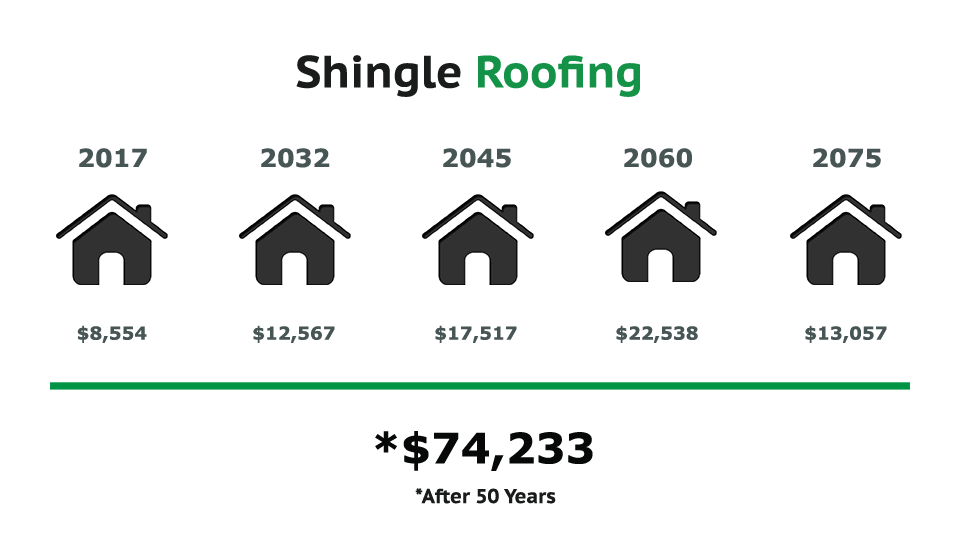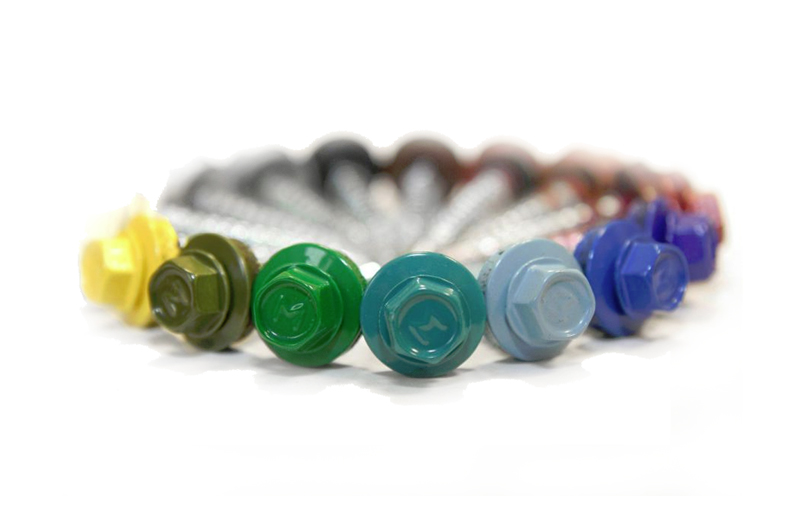There is much to consider when weighing asphalt vs. metal roofing. The allure of metal roofing systems comes not only from the great look but also from its longevity and durability. Metal roofing also has other benefits such as reduced heating and cooling costs, increase property value, and lower homeowner’s insurance rates.
Both metal and asphalt roofing get the job done when it comes to sheltering a building, but they really part ways when it comes to durability, energy efficiency, and cost. Asphalt shingles absorb a lot of heat, and that heat doesn’t stop at the roofline; it streams into the structure and increases the indoor temperature. Metal roofing, on the other hand, reflects the sun’s heat away from a building, leading to energy savings of about 50 percent, and it can be about 100 degrees cooler on the surface than traditional asphalt roofs.
A shingle roof also weakens and curls over time, making it less of a full-proof barrier for the effects of rain, wind, and other environmental forces, and necessitating roof maintenance and earlier replacement. A metal roof doesn’t take in all of the heat, it is very resistant to the elements when installed correctly, and it lasts much longer, needing little if any maintenance.


When it comes to metal or shingle roofing, metal roofing is easily the more complex option requiring specific techniques, experienced installers, and more pieces and parts needed to make it succeed. That being said, metal roofing is actually more common than you may think or notice, especially if you live in an environment with extreme weather conditions like Alberta. In addition to lasting decades longer than asphalt shingles, metal roofing offers the versatility and variety of options that most other roofing materials lack. Let’s dive deeper into the benefits and drawbacks associated with this roofing material.
Lightweight
One of the major benefits of metal roofing is that it’s a very lightweight material. First, it’s easier for the installers to handle and transport up on the roof during the roll forming and installation process. Second, it doesn’t weigh down and put unnecessary stress on a structure, which reduces frame damage and preserves the integrity of the building.
Longevity
Perhaps one of the biggest differences between metal roofing and shingles is the length of its life. For metal roofing, it’s expected that metal roofing should last at least 50 years until signs of degradation begin to show. Different metal materials, such as copper and zinc, have even been known to last 100 or more years in some instances.
Increased Property Value
Since metal roofing lasts longer and has a higher one-time cost in the short run, a building with a metal roof has a higher property value. This can also contribute to how easy it is to resell a structure, especially if the roof is in good condition and wouldn’t need to be replaced by the new owners. This can come in handy if you plan to put your home or building on the market.
Low Maintenance
The level of upkeep needed to maintain a metal roof is generally minimal, especially if the roof was correctly installed. The manufacturer’s maintenance guide will provide instructions on how to care for your new roof, but general upkeep would include looking for leaves, branches, and other debris that could get stuck on the roof and in the gutters around twice a year and after strong storms. In the event that dirt or other stains do not come off with rain, there are ways to clean your metal roof too.
Find the Right Contractor
Finding a qualified and experienced metal roofing contractor or installer will make or break an installation, especially since nearly all potential problems with metal roofing stem from some kind of installer error. When compared to shingle roofing installers, there are significantly fewer installers who are equipped and skilled at installing metal roofing.






